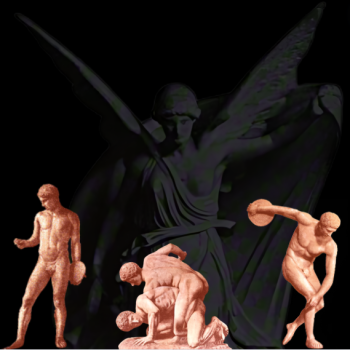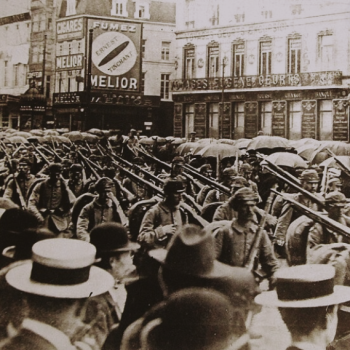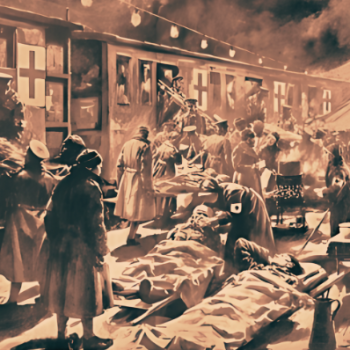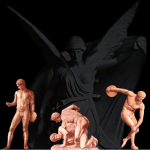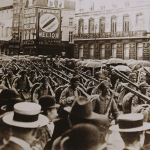There were still quite a few citizens of Findlay walking home from work on the evening of May 21, 1888. Nothing, at first, seemed out of the ordinary. Just a few years earlier it resembled a mining-town, with a scattering of derricks, immense oil tanks, and a few rude shanties. It was now the great natural gas town of Northwestern, Ohio, and the adventurers were displaced by civilization. The finely shaded streets were lined with pretty cottages, and the occasional pretentious dwelling, each with a neat private yard and stables.[1] Yes, nothing was out of the ordinary, until the early hours of the night. It was then when a strange fitful light began flashing at intervals in the northern skies, which only grew in intensity. This lightening was uncanny. It was uncanny and unnatural in its character.
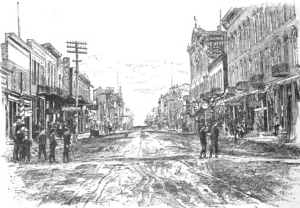
“The Main Street Of Findlay.”[2]
The lightning continued until 11 p.m., when plumes of light concentrated into a distinct object, fashioned from “a shadowy substance,” and which soon assumed the proportions of a giant hand; well-formed, and as distinct as if painted upon a black canvas. The hand reached from the horizon through which it seemed to be thrust half way up the sky, the wrists and fingers being particularly well-defined; perfect in form and proportion. The index-finger pointed downward toward the city. Within the spectral hand were beams of light, constantly changing from amber, to amethyst-rose. The light throbbed and pounded, as though coursing through arteries, and surged just as regularly as heartbeats in a human chest.
The meteorological wraith was framed with soft fleecy clouds, and if a monstrous, disembodied, hand was not hovering in the sky, one might have imagined the clouds to be the smoke of incense, arising and drifting, from the very altar of heaven. Suddenly the lights began to fall from the fingertips, in great ruby drops, “almost as large as hot-air balloons,” and swallowed up in the darkness below.
This impressive, and mysterious, exhibition was visible for over an hour. The hundreds of people who witnessed it were “thrown into torment of anxiety.” Many believed that it was a sign of the end of the world, or at least of the destruction Findlay. But the hand began to slowly fade away, and become a shadow. It was an uneasy slumber for the citizens of Findlay that night.[3]
SOURCES:
[1] White, Z.L. “Natural Gas In Findlay.” The American Magazine. Vol. VII, No. 2 (December 1887): 199-215.
[2] Ibid.
[3] “Findlay’s Fate.” The Springfield News-Sun. (Springfield, Ohio) May 23, 1888; “A Giant Hand In The Sky.” The New York Tribune. (New York, New York) May 23, 1888; “Remarkable Phenomena.” The Public Ledger. (Memphis, Tennessee) May 24, 1888; “Awe-Inspiring Portents Of War Seen In The Skies.” The World. (New York, New York) March 13, 1898.





